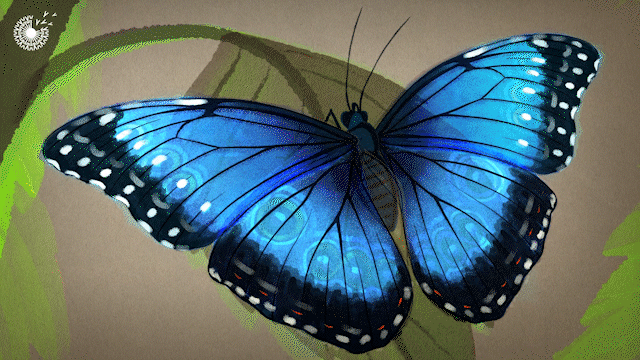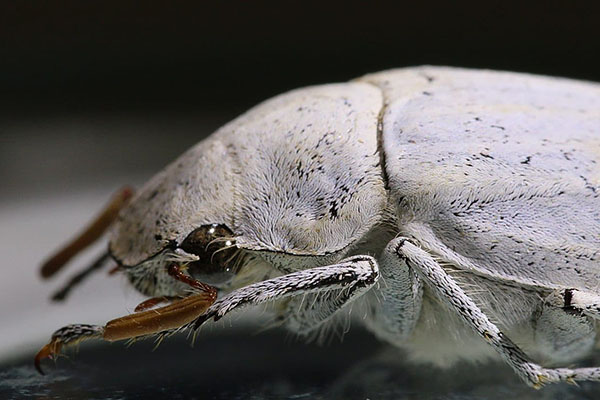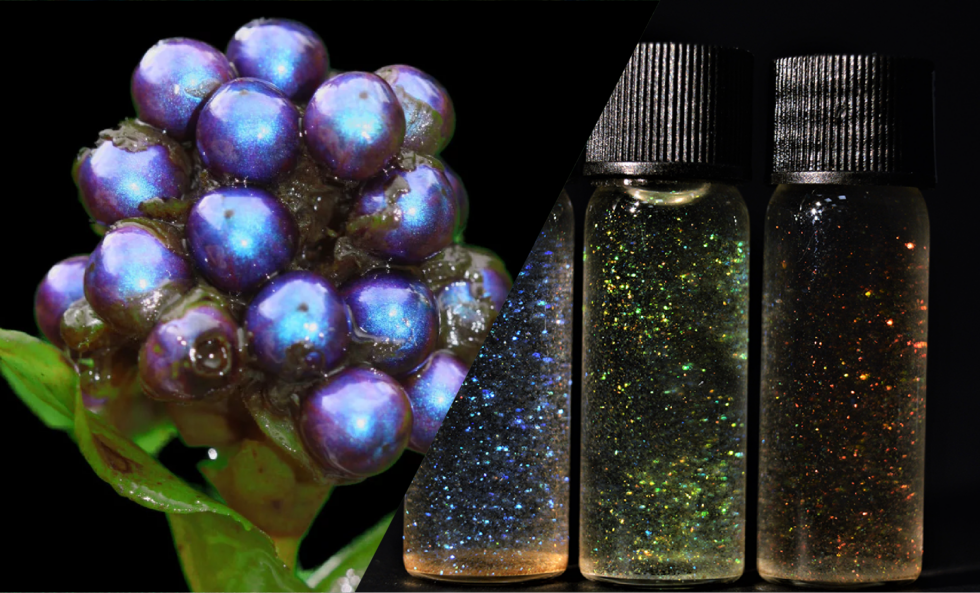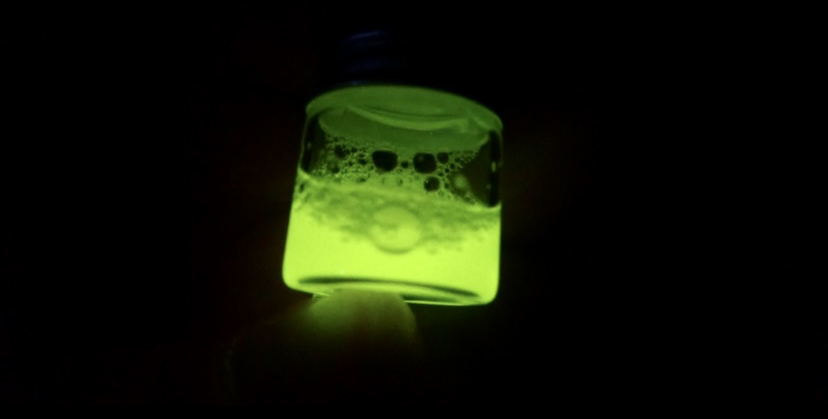At first glance, the importance of replacing existing pigments and dyes with nature-inspired alternatives may not be obvious. The environmental impacts from pigments are hard to quantify, but it is a $30 billion industry that is heavily reliant on mining and high energy usage.

Now a Short Science Lesson
The visible light spectrum is the segment of the electromagnetic spectrum that the human eye can view. Typically, the human eye can detect wavelengths from 380 to 700 nanometers. The colors we see are the wavelengths of light that are reflected off of objects. For example, a red car is reflecting the wavelengths we see as red and absorbing all the rest. This is how pigments and dyes work, they create color by absorbing and reflecting certain wavelengths of visible light.
Dye = smaller particle, soluble, chemically bonds to a surface
Pigment = larger particle, insoluble, suspended in a medium which attaches to a surface
However, many colorful surfaces found in nature do not use traditional pigments or dyes. Rather, organisms have evolved nano- and micro- structures to redirect wavelengths of light. This is called structural color, and some famous examples include the Cypris Morpho butterfly or a peacock feather. If you were to look at a morpho wing under sufficient magnification it would appear translucent, but the small periodic structures redirect the light and produce the brilliant colors we observe.


Seprify (formally Impossible Materials) has developed a 100%-cellulose white pigment inspired by a beetle that outperforms Titanium dioxide. Because their pigment is made of cellulose, the most abundant natural polymer, it is safe for humans and the environment. In fact, they are finding early traction in food, pharmaceutical, and personal care industries because the EU recently listed nanoparticles of Titanium dioxide as a potential toxin. Additionally, their product can enable up to a 90% reduction in GHG emissions, while contributing to safe working conditions by competing with extractive mining and chemical processing industries.

Like Seprify, Sparxell has developed 100%-cellulose pigments, though they are focused on iridescent colorants that can appear metallic. Their technology was inspired by the pollia berry and replicates the natural assembly processes found within the plant cell. Imagine all of the things that are metallic or iridescently colored in the world around us, from makeup to cars, to home decor and glitter. With plant-based color we are one step closer to a material pallet that breaks down into its basic building blocks, just like in nature.
Cypris Materials achieves colors using different materials, which are self-assembling brush block copolymers. By mixing just two polymers together in differing amounts, they can control which wavelengths of light are reflected, which can even extend beyond the visible light spectrum. They have an ongoing relationship with BASF to develop coatings for the automotive industry, and the self-assembling nature of their product is based upon the research of their late co-founder and Nobel Laureate Dr. Robert Grubbs.
Finally, we need to mention that there are pathways outside of pigments and structural color in which organisms create color. For example, some jellyfish and coral create color via fluorescent proteins. Werewool (2020) is learning from this approach to create textile fibers with embedded color, and Lux Bio (2023, formerly Nyoka) is developing bioluminescent proteins that outperform chemiluminescence products used in medical and industrial applications. Because both of their products learn-from and utilize proteins, their products can be grown in bioreactors and are non-toxic to humans and the planet.


